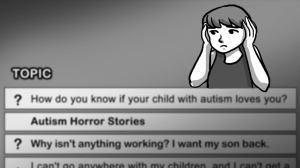Originally published on The Huffington Post and republished here with the author’s permission.
“They didn’t have a wheel.”
That was my takeaway from the slim chapter on pre-Columbian Mesoamerican cultures in my world history book: that the indigenous Mexicans, though they had clay wheels they used as toys, failed to invent the wheel.
As a biracial person of European and Mexican heritage, this was the first time I’d read about my “other” culture in a textbook.
By that time, my young brain was full of knowledge about Europe. I knew the names of the kings and queens, the Henrys and Georges and Catherines. I knew about the classical period and the holy wars and the fall of Rome, about the crusades and the Renaissance.
I didn’t know everything, of course. But I knew a lot.
It was a magic history, rich in detail and texture like a tapestry – full of characters whose triumphs and defeats shaped the world we live in today.
And the innovation! Advances in philosophical thought that still influence the way people think, architectural wonders that remain as testaments to human ingenuity, artistic masterpieces that continue to be studied and analyzed.
European history, it was clear, is living history.
When it finally came time to learn about the ancient Mesoamerican cultures, I was excited to find more of the things that made European history so interesting to me. I was excited to learn about my other heritage.
What had they contributed? What were their achievements? Who were their philosophers and architects and artists?
What I learned instead, however, was what they didn’t do.
It began with their non-invention of the wheel. The most basic prerequisite for any advanced group of people, the litmus test for “advanced society,” and my people had failed it.
The rest of the precious few pages pre-Columbian Mesoamerican societies were afforded were largely spent establishing their many evils: blood sacrifices to hungry gods, an insatiable lust for power and conquest, and a morbid, crude fascination with death.
The text compared these primitive societies with the more advanced Europeans, making lists of things they didn’t have.
They didn’t have beasts of burden. They didn’t have guns. They didn’t have steel. And, of course, they didn’t have wheels.
Wheels? But what would the Aztec have done with wheels?
The Aztec, whose capital city of Tenochtitlan was built on water, home to over 200,000 people, engineered with canals and floating gardens and causeways – why roll what you can float?
These are questions I could have asked, but didn’t.
As for things the pre-Columbian societies did have, these were still compared to the European precursors, to which they almost always paled in comparison. This was like that, only not as sophisticated. This, similar to that, but primitive.
It seemed that the only way to talk about these cultures was to put them in the context of European history.
The name “pre-Columbian” is evidence itself. These cultures, these societies that had existed independently from Europe for so many years were only given significance when first touched by conquest.
The history of the Americas before Europeans arrived is “pre,” and the history after, “Columbian,” after its “discovery.”
The chapter ended with the arrival of the Europeans, who rolled in on wheels and wiped the indigenous people out.
As for the Aztec, they were destroyed and enslaved. Their capital was buried under modern Mexico City. Their temple was broken down and turned into a cathedral.
And that was their end.
I didn’t know how to articulate it at the time, but after reading about my Mexican ancestry, I felt shame. I felt lesser. I felt like my culture hadn’t contributed or didn’t matter.
I felt like my culture, my history, was dead.
It wasn’t until I developed more critical thinking skills that I realized I had been taught a Eurocentric, whitewashed version of history.
I realized that the wheel was an arbitrary benchmark and that the depiction of pre-Columbian Mesoamerican cultures as “savage” was hypocritical.
Yes, the Aztec conquered people. But didn’t the Europeans conquer the Aztec? Didn’t the Europeans take their land, build haciendas, and put them to work mining for silver and gold?
I realized that the truth is humans have always accomplished great things under the conditions in which they lived, that the pre-Columbian Mesoamerican societies were brilliant engineers, artists, astronomers, and philosophers.
They just weren’t European.
I don’t believe teachers or the education system are consciously propagating this outdated view of the world. My high school history teacher was one of the best, better than any college professor I’ve had. I received an education that most people in the country would consider the standard.
The problem, as is the problem with institutions such as racism and sexism, is that Eurocentrism is a system, pervasive in several facets of our society and upheld by tradition.
The way we teach minority cultures as primitive and Europeans as advanced in our schools is wrong. It asserts one culture over another. It perpetuates supremacy and encourages the subjugation of people of color.
When we teach someone that their heritage is lesser, they see themselves as lesser.
It also keeps students from being able to understand the world we live in, how to understand people from other cultures and how to see things from their perspective. In an increasingly globalizing era, this skill is crucial.
The cultures of the world do not begin and end with Europeans. Their merit is not measured by how similar they were to European societies, and their history is not dead.
We must understand that Eurocentrism in our schools is a cog in the machine of institutional oppression.
And when we do nothing about it, the wheels roll on.
[do_widget id=’text-101′]
John Paul Brammer is a writer, blogger, and activist from Oklahoma. His work has been featured in This Land Press and The Advocate. He frequently writes on the topics of LGBT activism and his Mexican American background.
Search our 3000+ articles!
Read our articles about:
Our online racial justice training
Used by hundreds of universities, non-profits, and businesses.
Click to learn more





















